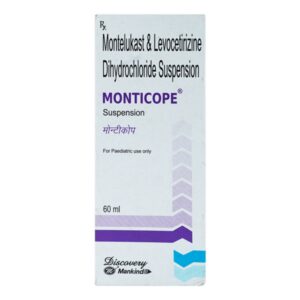Description
About Ocupol DX Eye Ointment 5 gm
Ocupol DX Eye Ointment 5 gm is a combination medicine used to treat bacterial eye infections. It is also used to treat steroid-responsive inflammatory ocular conditions. Bacterial eye infection occurs when harmful bacteria invade any part of the eye such as the eyeball, conjunctiva, or cornea.
Ocupol DX Eye Ointment 5 gm contains Polymyxin B, Chloramphenicol, and Dexamethasone. Polymyxin B works by damaging the bacterial cell membrane. Chloramphenicol kills the bacteria by preventing the synthesis of essential proteins required for survival of the bacteria. Dexamethasone blocks the chemical messengers that cause swelling, itching, and redness. Together, Ocupol DX Eye Ointment 5 gm helps in treating bacterial eye infections.
In some cases, Ocupol DX Eye Ointment 5 gm may cause side effects such as a burning sensation, itchiness, irritation, and dryness. Most of these side effects do not require medical attention and will resolve gradually over time. However, you are advised to talk to your doctor if the side effects persist or worsen.
Consult your doctor if you are pregnant or breastfeeding. Do not touch the tip of the dispensing container as it may contaminate the contents. Keep your doctor informed regarding your health condition and the medicines you are taking to prevent any side effects/interactions.
Uses of Ocupol DX Eye Ointment 5 gm
Medicinal Benefits
Ocupol DX Eye Ointment 5 gm is used to treat bacterial eye infections. It is also used to treat steroid-responsive inflammatory ocular conditions. Ocupol DX Eye Ointment 5 gm contains Polymyxin B, Chloramphenicol, and Dexamethasone. Polymyxin B works by damaging the bacterial cell membrane. Chloramphenicol kills the bacteria by preventing the synthesis of essential proteins required for survival of the bacteria. Dexamethasone blocks the chemical messengers that cause swelling, itching, and redness. Together, Ocupol DX Eye Ointment 5 gm helps in treating bacterial eye infections. It may also be indicated in chronic anterior uveitis (inflammation of the middle of the eye) and corneal injury from radiation, chemical or thermal burns, or penetration of foreign bodies.
Directions for Use
Storage
Side Effects of Ocupol DX Eye Ointment 5 gm
- Burning sensation
- Itchiness
- Irritation
- Dryness
Drug Warnings
Do not use Ocupol DX Eye Ointment 5 gm if you are allergic to any of its components or if you have epithelial herpes keratitis (infection of the cornea), vaccinia (pox virus), varicella (chicken pox), other viral diseases of the cornea and conjunctiva, mycobacterial infections of the eye and fungal eye diseases. Ocupol DX Eye Ointment 5 gm is for ophthalmic (eye) use only. Do not inject or swallow Ocupol DX Eye Ointment 5 gm. Avoid touching the tip of the dispensing container as it may contaminate the contents. Inform your doctor if you have an eye injury. Consult your doctor if you are pregnant or breastfeeding. Let your doctor know if you are taking any prescription/non-prescription medicines or herbal supplements.
Drug Interactions
Drug-Drug Interactions: No interactions found/established.
Drug-Food Interactions: No interactions found/established.
Drug-Disease Interactions: No interactions found/established.
Habit Forming
Diet & Lifestyle Advise
- Wash your hands regularly. Avoid touching the eyes with dirty hands.
- Avoid sharing eye makeup such as eyeliner, mascara or kohl.
- Always use clean towels or tissues to wipe your eyes and face.
- Regularly wash and change the pillowcases.
- If you wear contact lenses: Clean and replace the contact lens more often. Never share contact lenses. Remember to wash your hands before inserting and after removing the contact lens.
- Avoid staring at digital screens for longer durations. Rest your eyes every 20 minutes.
- Blink regularly as it helps spread hydrating substances such as mucus and tears across the eyes.
Disease/Condition Glossary
Bacterial eye infections: Bacterial eye infection occurs when harmful bacteria invade any part of the eye such as the eyeball, conjunctiva, or cornea. Symptoms of an infection include red eye, pain, discharge, watery/dry eyes, swelling, itching, and sensitivity to light. The common bacterial eye infections are conjunctivitis, stye, and keratitis. Conjunctivitis (pink eye) is the infection/inflammation of the conjunctiva (white part of the eye) and the inner eyelid. A stye is a bump on the eyelid or base of eyelashes. Keratitis is the inflammation of the cornea. It is a common problem in people who wear contact lenses.






Reviews
There are no reviews yet.